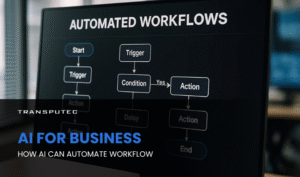Written by KRITIKA SINHA | MARKETING
Although artificial intelligence (AI) is currently in the spotlight, cloud computing remains an important and widely discussed topic. If you’re thinking about transitioning your business to the cloud, either for application or infrastructure deployment, it is crucial to comprehend the distinctions and benefits of various cloud services.
There are three main models of cloud service that you can consider and compare:
- Software as a Service (SaaS),
- Platform as a Service (PaaS),
- Infrastructure as a Service (IaaS)
Let’s understand more in detail the difference between SaaS, PaaS, and IaaS.
Software as a Service: Simplifying Your Software Experience
SaaS is a cloud-based software delivery model that allows users to access and utilise applications through the internet, without the need for complex on-premises installations or maintenance. With SaaS, the software provider manages and maintains the underlying infrastructure, including servers, databases, and security, freeing up your IT team to focus on more strategic initiatives.
Platform as a Service: Streamlining Application Development
PaaS is a cloud computing model that provides a platform for developers to build, run, and manage applications without the need to manage the underlying infrastructure. With PaaS, the cloud provider handles the hardware, operating systems, and other backend services, allowing developers to focus on coding and deploying their applications.
Infrastructure as a Service: Customising Your Cloud Infrastructure
IaaS is a cloud computing model that provides virtualised computing resources, such as servers, storage, and networking, over the internet. With IaaS, organisations can rent these resources on-demand, rather than investing in and maintaining their own physical data centers.
What is Cloud Cost Optimisation?
Transputec offers comprehensive Cloud Services to meet diverse business needs. Leveraging leading cloud providers like Microsoft Azure and AWS. Transputec ensures scalability, security, and efficiency for clients.
We specialise in crafting tailored cloud strategies, facilitating seamless migration, and optimising cloud environments for enhanced performance.
Common Examples
| SaaS Examples | PaaS Examples | IaaS Examples |
|---|---|---|
| Google Workspace, Dropbox, Salesforce, Cisco WebEx, Concur, GoToMeeting | Amazon Web Services (AWS) Elastic Beanstalk, Windows Azure, Heroku, Force.com, Google App Engine, Apache Stratos, Red Hat OpenShift | DigitalOcean, Linode, Rackspace, AWS, Cisco Metapod, Microsoft Azure, Google Compute Engine (GCE) |
Characteristics
Software as a Service:
- Multi-tenancy architecture
- Subscription-based pricing model
- Automatic updates and maintenance
- Accessibility via web browser
Platform as a Service:
- Development tools and frameworks
- Middleware and database management
- Scalable infrastructure
- Collaboration features for development teams
Infrastructure as a Service :
- Virtualised computing resources
- On-demand scalability
- Pay-as-you-go pricing model
- Control over operating systems and applications
Would You like Assistance with any Cloud Services?
Connect with us today for our free consultation!
Key Difference
| Aspect | Software as a Service | Platform as a Service | Infrastructure as a Service |
|---|---|---|---|
| Definition | Delivers software applications over the internet on a subscription basis, accessible via web browsers. | Offers a platform allowing developers to build, deploy, and manage applications without dealing with the underlying infrastructure. | Provides virtualised computing resources over the internet, including virtual machines, storage, and networking. |
| Management | Provider manages applications, data, runtime, middleware, operating systems, and infrastructure. | Users manage applications and data, while the provider manages the underlying infrastructure, runtime, middleware, and operating systems. | Users manage applications, data, runtime, middleware, and operating systems. |
| Scalability | Provides scalability, automatically adjusting resources based on user demand, ensuring optimal performance. | Offers scalable infrastructure, enabling developers to focus on coding without worrying about resource provisioning. | Allows users to scale resources up or down based on demand, offering flexibility and cost-effectiveness. |
| Customisation | Limited customisation options, as applications are provided as-is by the provider. | Provides a platform with development tools and frameworks, offering flexibility for developers to customise applications. | Users have control over operating systems, applications, and configurations, allowing for greater customisation. |
| Use Cases | Suitable for businesses seeking ready-to-use software solutions without the hassle of maintenance or infrastructure management. | Recommended for developers focusing on application development, testing, and deployment, promoting faster development cycles. | Ideal for businesses requiring control over their IT infrastructure, hosting websites, running applications, and supporting diverse workloads. |
SaaS, PaaS, and IaaS with Transputec
Transputec offers a range of IaaS, PaaS, and SaaS options that you can combine to create a cloud-computing environment. This environment provides you with the necessary infrastructure, platform, and applications without any associated hassles.
1. Infrastructure as a Service is a cloud computing service that provides virtualised computing resources such as servers, storage, and networking over the internet. Transputec offers Infrastructure as a Service where you can rent these resources and have complete control over the operating systems, applications, and configurations. However, Transputec manages the underlying infrastructure for you.
2. Platform as a Service is a step above IaaS, providing a complete platform for developing, testing, deploying, and managing applications. With Platform as a Service from Transputec, you no longer need to manage the underlying infrastructure such as servers, storage, and other resources. Instead, Transputec provides the platform, and you can focus on building and deploying your applications.
3. Software as a Service offers complete, ready-to-use software applications delivered over the internet. Transputec offers SaaS services where you can access and use the provider’s software which is centrally hosted and managed by Transputec. Examples of Software as a Service applications include email, customer relationship management (CRM), and office productivity suites.
Conclusion
In conclusion, navigating the landscape of cloud computing demands a clear understanding of the distinctions between SaaS, PaaS, and IaaS. Each model offers unique advantages and is tailored to specific business requirements. By strategically harnessing the power of cloud services, organisations can drive innovation, streamline operations, and achieve greater agility in today’s dynamic business environment.
Transputec embodies the principles of these three services, offering clients unparalleled flexibility, scalability, and innovation in the cloud. By leveraging Transputec’s comprehensive suite of cloud solutions, businesses can unlock new opportunities for growth, efficiency, and success in today’s digital-first world.
Ready to harness the power of cloud computing for your business? Contact us today for a free consultation and discover how Transputec can elevate your cloud strategy to new heights.
Ready to take your business to the Cloud!
Speak with a cloud specialist and get started on your journey to the cloud.
Contact us today.

FAQs
What are the key differences between SaaS, PaaS, and IaaS?
The key differences lie in their deployment models, management responsibilities, customisation options, and maintenance requirements.
Can businesses use multiple cloud service models simultaneously?
Yes, businesses often leverage a combination of these three services to meet their diverse needs. This approach, known as cloud computing hybridisation, allows organisations to optimise performance, cost efficiency, and flexibility.
How do cloud service models impact security and compliance?
While cloud providers implement robust security measures, businesses must ensure compliance with data protection and privacy regulations when using cloud services. Additionally, businesses should implement security best practices and encryption protocols to safeguard sensitive data.
What factors should businesses consider when choosing a cloud service model?
Businesses should consider factors such as scalability, cost efficiency, customisation requirements, and regulatory compliance when selecting a cloud service model. Additionally, evaluating provider reputation, reliability, and support services is crucial for ensuring a seamless transition to the cloud.
Are there any potential drawbacks to using cloud services?
While cloud computing offers numerous benefits, including flexibility, scalability, and cost savings, businesses must address potential drawbacks such as security concerns, dependency on providers, limited customisation options, and compliance issues.
How can businesses mitigate risks associated with cloud computing?
To mitigate risks associated with cloud computing, businesses should implement robust security measures, conduct regular risk assessments, establish contingency plans for provider outages, and stay informed about emerging threats and vulnerabilities in the cloud landscape.







